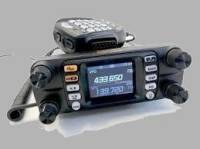|
Click The Radio Image On The Left To Return To Homepage Feel Free To Copy Any Information On The Webpages |
| |
| AB7CQ & W9RIC First Yaesu Fusion DR-2X IMRS LAN Link In North America Between Arizona & Wisconsin
What's The Difference Between FUSION WIRES-X & IMRS
1. WIRES-X is basically a node system and Fusion IMRS LAN linking is not intended to replace WIRES-X.
2. Fusion IMRS LAN linked repeaters allow direct linking of Fusion DR-2X repeaters. Linking allows repeaters, especially in troublesome geographical terrain that would otherwise make it difficult, or nearly impossible, to provide wide area coverage. It also allows linking of repeaters without installing and maintaining expensive linking hardware. Fusion DR-2X IMRS repeaters DO NOT require linking through a Japanese server, and once configured, they do not require a computer.
Now consider that IMRS is a direct connect between repeaters, bascially a plug and play linking method. Unlike WIRES-X, there is virtually no lag time in the communications between repeaters.
WIRES-X & IMRS are both great communication modes and have their place in VHF/UHF communications, and both deserve consideration from users. It's like the old saying, "being able to see the forest through the trees."
Bob Krueger, AB7CQ Web Administrator 146.920/146.320 PL 123.0 444.600 / 449.600 PL 100 Repeater IRLP Node: 7515 PL 114.8 ab7cqradio@ebidpal.com |
